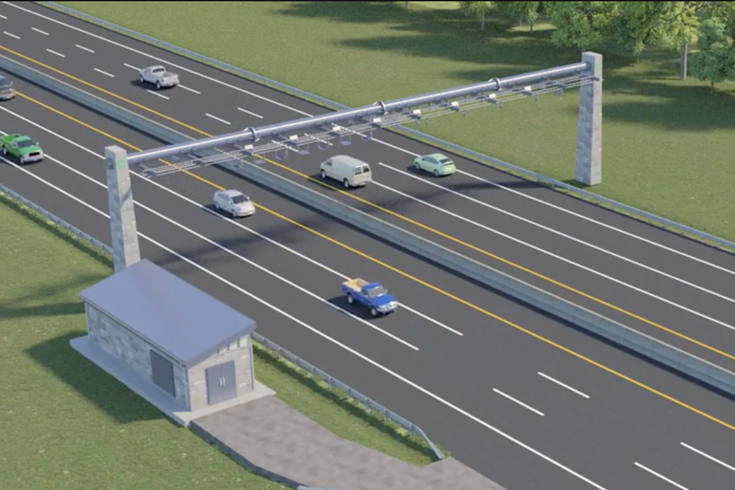
May 04, 2023
 Source/Pennsylvania Turnpike
Source/Pennsylvania Turnpike
The Pennsylvania Turnpike is constructing 19 overhead, electronic tolling gantries along roadways in the eastern part of the state, including the Northeast Extension of I-476. The gantries will allow drivers to pass through toll points without slowing down.
The final stage of the Pennsylvania Turnpike's transition to all-electronic tolling began this week with early work on the construction of new overhead tolling gantries, which will enable drivers to travel at highway speeds instead of slowing down to pass through toll booths.
The turnpike's open road tolling program will begin in the eastern part of the state. Nineteen gantries will be installed along the entire Northeast Extension of I-476 and east of the Reading Interchange at Exit 286 to the New Jersey line. These structures are projected to be completed and in use some time in 2025.
Plans to build gantries along the turnpike in the central and western parts of the state are expected to start in 2025, with an anticipated completion date in 2027.
Pennsylvania State Police began slowing traffic along the project's eastern routes this week in order to enable crews to build access roads for toll equipment buildings, which will sit alongside the highway. The slowdowns will occur on Sunday nights during off-peak hours for the next several months, officials said.
Later stages of the project will involve building the overhead structures that will improve traffic flow on the turnpike. A map shows where the 19 gantries will be built in the eastern part of the state.
The Pennsylvania Turnpike Commission began planning its all-electronic tolling initiative 13 years ago, debuting several pilot projects between 2016-2019. During the COVID-19 pandemic, the remainder of the 564-mile turnpike system went all-electronic instead of having staffed toll booths.
Switching from tollbooths to overhead gantries is expected to save the turnpike about $75 million a year. It will also allow for new interchanges to be added at lower costs.
“ORT is a safer, more convenient way for customers to travel and represents the future of toll collection worldwide," Pennsylvania Turnpike Commission CEO Mark Compton said.
The Pennsylvania Turnpike has been in poor financial health for years. Last fall, Auditor General Tim DeFoor said the Turnpike Commission's $13.2 billion debt is larger than the debt of the entire state government. Part of the commission's woes stem from its past obligation under Act 44, which required annual payments of $450 million to PennDOT support infrastructure projects since 2007. This year, the annual contribution dropped to $50 million annually over the next 35 years.
The state audit also found that uncollected tolls have ballooned to more than $104 million. Most unpaid tolls are from drivers who do not use E-ZPass and are instead billed via mail with the turnpike's toll-by-plate system. The Pennsylvania Turnpike has increased tolls every year since 2007, including a 5% hike that took effect Jan. 8.
Common tolls for a passenger vehicle rose from $1.70 to $1.80 for E-ZPass customers and from $4.10 to $4.40 for toll-by-plate customers.”
The turnpike has said it expects to continue with 5% annual toll increases through 2025, with a goal of keeping annual increases to 3% starting in 2028.
To crack down on drivers with outstanding toll invoices, the turnpike said in January it is partnering with PennDOT to impose more severe penalties, including fines and driver's license suspensions for those who don't pay their balances.